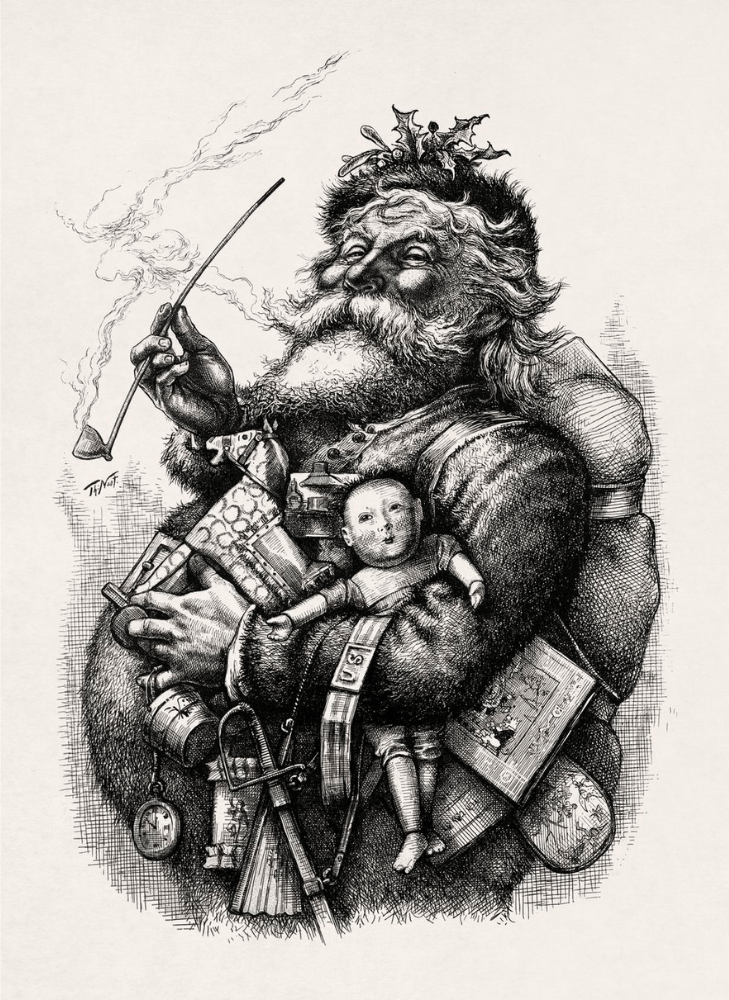Annual Holyday Trivia
Learn about the Ancient Origins of Your Favorite Traditions
Happy Holydays!
This is my first year on Substack, and so it’s the first year I’m sharing my annual Holyday Trivia here!
This is a fun opportunity to geek out on the historical and symbolic origins of our holiday traditions!
These little fun facts are a great way to connect with the ancient roots of our modern celebrations. And you can make it into a game to play with loved ones 'round the turkey or tree!
Who will be the trivia whiz at your celebrations?!
HOLYDAY TRIVIA
Q: Why do we use the abbreviation Xmas?
A: The "X" in Xmas comes from the Greek letter Chi, which is the first letter of the Greek word Christós (Χριστός), which translates to Christ. In the days when Christians had to hide their religious practices, the "X" was a secret symbol that could be used to recognize each other. As Christianity became a dominant religion, the "X" became a universal symbol to represent Christ.
Xmas is pronounced "Christmas", not "ex-mas".
Q: What does advent mean?
A: arrival or coming
Advent celebrates the arrival of the Christ child.
Q: Why do we kiss under the mistletoe?
A: Mistletoe has represented fertility, romance, and vitality since ancient times, but a Norse myth is probably to blame for the kissing!
Q: Which one of Santa's reindeer has the same name as another holiday mascot?
A: Cupid
Q: How long does Kwanzaa last?
A: 7 days
Q: What prophet foretold that a virgin shall give birth to a son called Emmanuel?
A: Isaiah
Q: How many blessings are said on the first night of Hanukkah?
A: 3
The Blessing Over the Candles and the Blessing About Miracles are said every day of Hanukkah, but the Shehecheyanu—The Blessing of Firsts—is only said on the first night.
Q: What are wild reindeer called in North America?
A: Caribou
Q: How many gifts were given total in the 12 Days of Christmas song?
A: 364
Q: When did the first image of our modern-day Santa Claus appear?
A: 1863
Harper’s Weekly ran an image of a rotund Santa giving out presents in a Union Army camp and another of Santa in his sleigh and going down a chimney. What started as wartime propaganda and political commentary by artist Thomas Nast, has lived on well past the end of Nast’s Santa illustrations and into the modern image we know today.
Q: How many pounds does the average American gain during the holiday season?
A: 1 pound
Q: What is the actual name of the object Jewish people light on Hanukkah?
A: A hanukkiah
A menorah traditionally has 7 branches, while a hanukkiah has 9.
Q: Where did Jesus' family flee from Bethlehem?
A: Egypt
Q: When are the 12 days of Christmas and why did we traditionally celebrate for 12 days?
A: In the Roman Christian tradition, the 12 days are Dec 25-Jan 5. Orthodox Catholics celebrate the 12 days of Christmas from Dec 26-Jan 6. The 12 days of Yule—the holiday that likely inspired the 12-day tradition—are generally celebrated from Dec 20-Jan 1.
Q: What modern British holiday falls on St. Stephen's Day?
A: Boxing Day
Q: Where were wreaths traditionally hung?
A: They were usually worn around the head, neck, or waist!
Q: Who first introduced the idea of elves working with Santa?
A: Louisa May Alcott in her 1855 story Christmas Elves
Q: What indigenous tradition inspired our modern Santa Claus?
A: In the region of Sápmi (also known as Lapland) in Northern Finland, traditional Sami shamans dressed in red-and-white suits resembling the sacred Amanita muscaria mushroom and visited families on the Winter Solstice in sleds drawn by reindeer. The psychedelic mushroom that inspired these travels is famous for creating a sensation of flying, and it was said that these flying shaman and their reindeer came down through the smoke-hole in the roof when houses were blocked in with snow. They brought gifts of magic to families, acting as intermediaries between the human and spirit world for the healing of all.
Q: What's YOUR favorite holiday tradition?
A:
Wishing you and yours the very best for a Light and blessèd holyday season, however and wherever you celebrate.
Blessings of Magic & Joy,
Allysha Lavino
P.S. Best wishes to all those out there engaging in celebrations of every shape and size. Merry Christmas, Happy Hanukkah, Blessèd Solstice, Happy Kwanzaa, Wonderful Pancha Ganapati, Bright Yule, Beautiful Shabe Yalda, Merry Koliada, Happy Soyal, Enjoyable Boxing Day, and a Joyaunt Festivus to you and yours!
Thomas Nast's illustration of Santa Claus for Harper's Magazine, 1881.





Loved the trivia, Allysha.
Fun! Thank you.
Another fun fact about Mistletoe. Ireland has a long tradition of using mistletoe. They hung it in their entries and would greet family members with a kiss. Especially if the members had been feuding, a kiss under the mistletoe would signify “live and let live”, “all is well” that they would set all feuds aside and move on being family and loving each other.